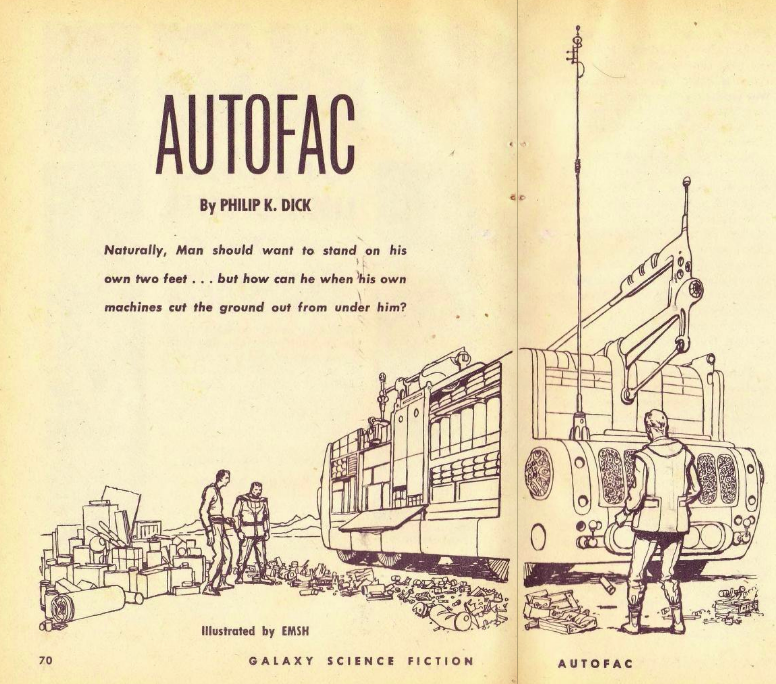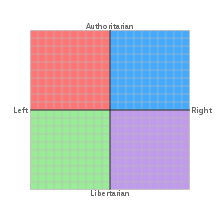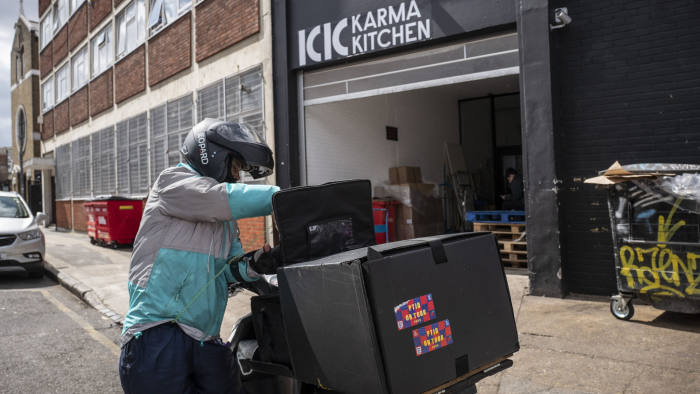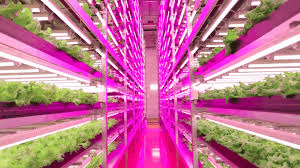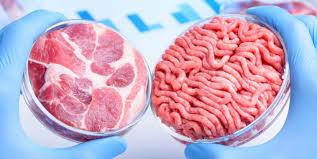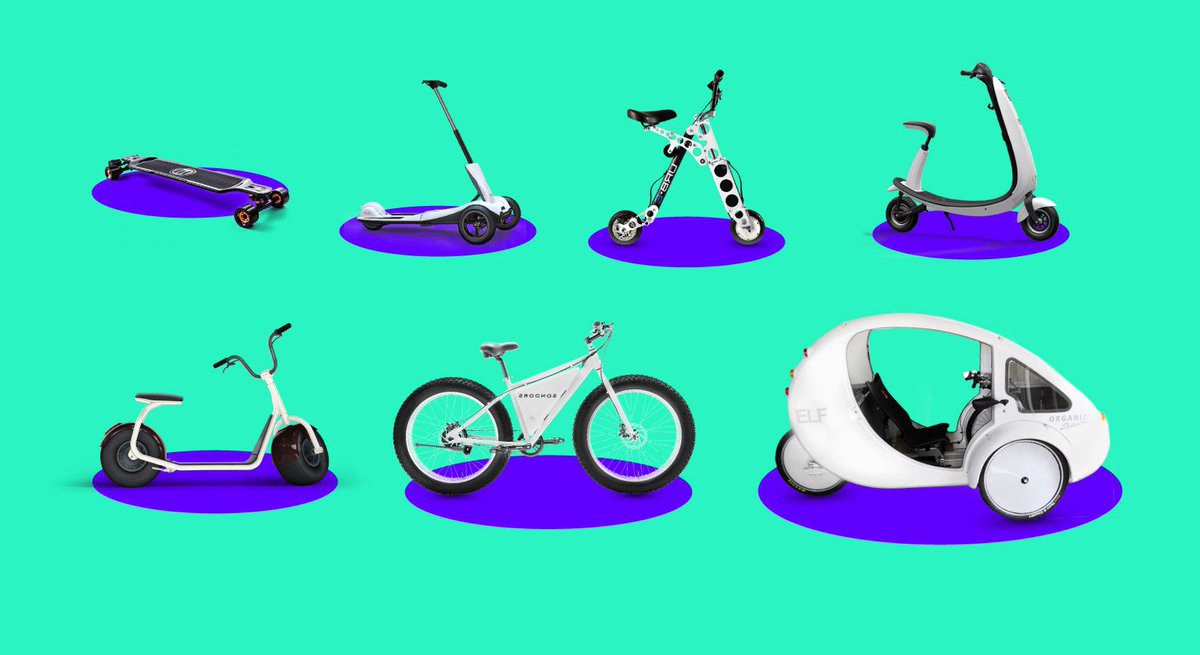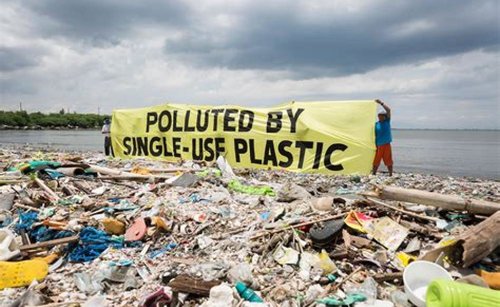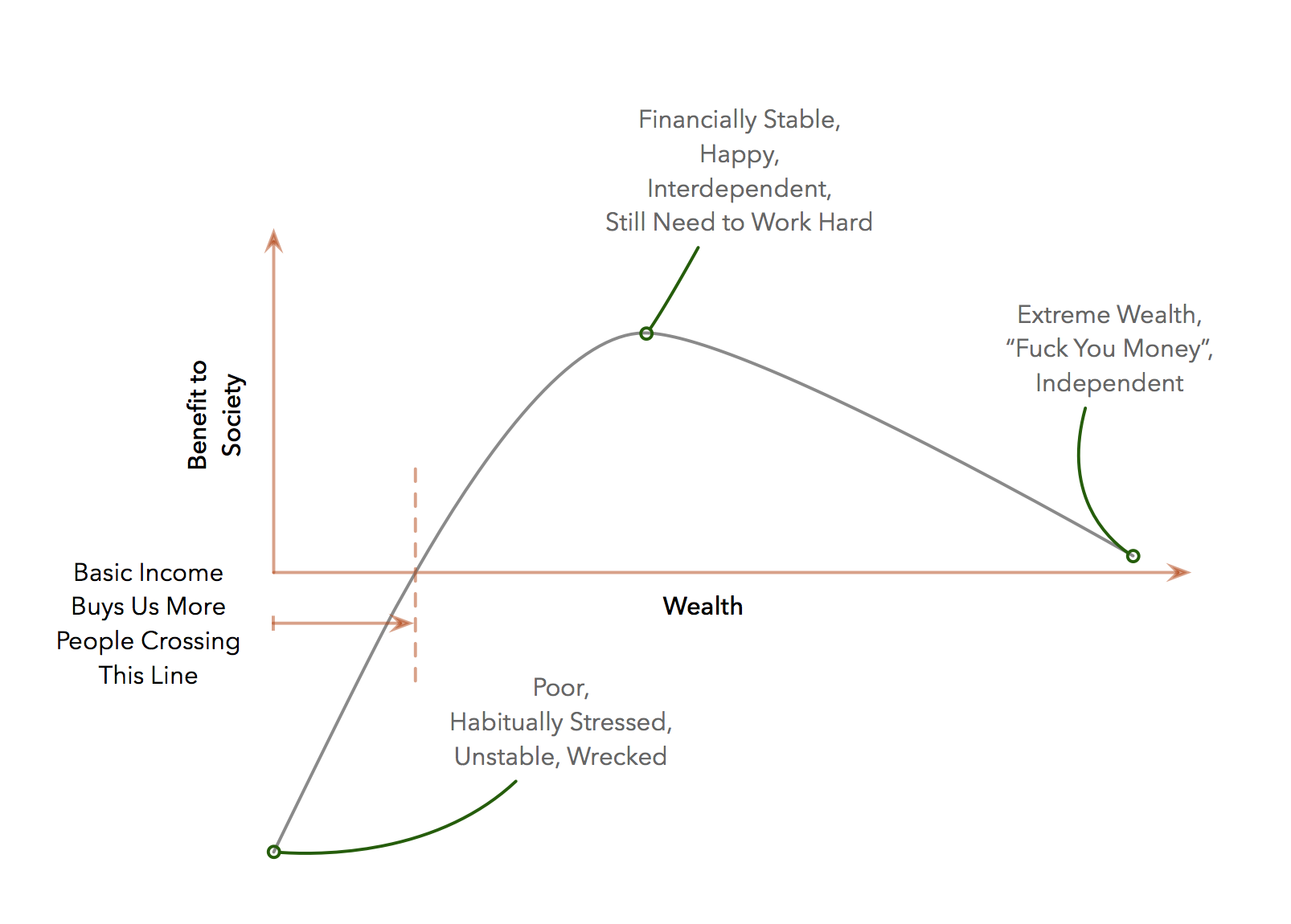Updated: A Game About Possible Futures - the cards
5G/𝒩G
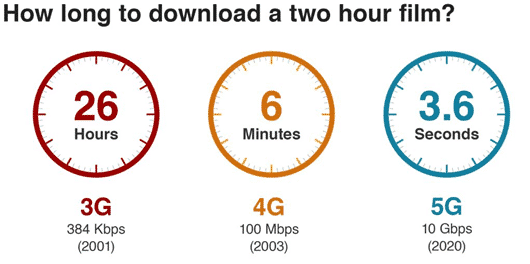
Wildly optimistic speeds, but in the rough orders of magnitude. Do Yourself A Favour – Don’t Get A 5G Phone Just Yet
Each increase in G increases connectivity speed, and changes the types of things that you can do while connected to that network. 3G allowed full webpages rather than just WAP1.
5G untethers broadband speeds from the geographical constraints of fibre optic or copper networks. Once there’s a 5G network in place, high tech applications can be set up with no digging, it also allows for easy reconfiguration of data rich robotics in warehouses.
Conspiracy theorists think it’s a mind control mechanism.
Consider
-
In the 2030s 6G will bring even faster connections, what will that allow
-
If you don’t need to re-cable, what will this mean for factories? For offices?
AGI fast take off

Specific—or weak—AI is useful for things like image recognition, or playing chess. Artificial General Intelligence (AGI) is different because it can solve general problems.
One of the problems that it is likely to want to solve is making itself more capable. In an AGI fast take off scenario, the AI will put all its effort into improving its ability. It may well start at dog level intelligence, and maybe over the next week or two it’ll get to chimp level intelligence. Within another day or so it’ll get to a stupid human, and within a minute or two will have become far smarter than the most intelligent human ever to live.
This card gives you the choice of whether you want to assume that the AGI will try to kill us all, or if it’ll think of itself as a loving parent to us.
Consider
-
Who “owns” a greater-than-human intelligence?
-
Is it unethical to turn it off?
-
What impacts would AI/AGI have on a future city or workforce?
-
What if the AI’s motivations don’t align with ours? It’s much smarter than us, should we treat it as a god?
AI Bias
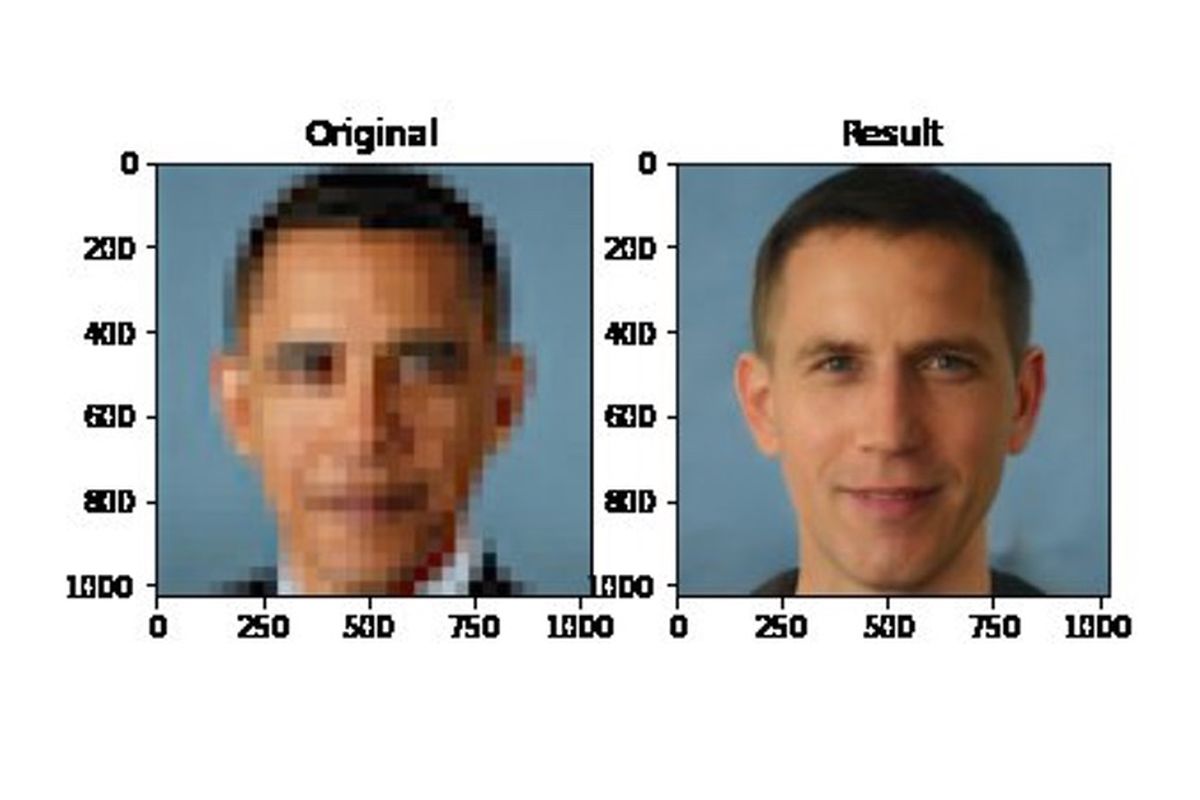
The PULSE algorithm takes pixelated faces and turns them into high-resolution images. However, it has a strong bias towards white faces. ∴ Obama -> white guy. The Verge
Bias can be built into algorithms in several ways. The obvious one is through the datasets used to train the system. If a dataset has only cats, it will classify a dog as a cat. It can also be introduced through the hyperparameters (the setup variables of the system).
Propublica2 showed widespread bias in sentencing based on an algorithm that baked in, amongst other things, geographical biases, e.g. if you live in a black neighbourhood, sentence more harshly.
Many ML algorithms are considered “black boxes” so can’t be explained. There is a lot of work on trying to make that not the case.
Consider
-
Whose responsibility is it to make sure that algorithms don’t discriminate against particular groups of people?
-
Is there an acceptable rate of failure? What is that relative to the human rate of failure?
AI creativity

Artificial intelligence: Google’s AlphaGo beats Go master Lee Se-dol Published12 March 2016 BBC
Algorithms like alpha go have been displaying signs of non-human creativity, i.e. they’re doing things that their creators think are beyond the scope of their training.
Other algorithms, like style transfer GANs, look creative, but are quite predictable. However they produce art-like outcomes which—it could be argued—is what most “creative” human “artists” do.
Consider
-
What is creativity? Can it be defined in a way that doesn’t involve humans?
-
Can a machine think? If you take a pragmatist view, does that matter?
Advert free internet

The dominant business model of the internet is making a service that people use, and then serving adverts to those people while they’re there. If you could opt out of those adverts there would need to be some other kind of value transfer to make the service worth running.
Each time an ad is served (an impression), it costs the advertiser a tiny amount of money, more if it’s clicked. These sums would be dwarfed by transaction fees as an impression is in the order of $0.012 per impression and a transaction fee is somewhere between $0.03 and $0.30. So the payments would need to be aggregated by another party before being passed to the banks.
Companies like Blendle3
Consider
-
Would you pay money to avoid adverts?
-
Adverts make you aware of products and services that potentially make your life better. Would you suffer without them?
-
How would graphic design trends change if there was less to put on the page?
-
If the wealthy paid not to see ads, would ads change? Wealthy customers are worth more to advertise to, would people need to pay a % of their wealth to avoid adverts?
Audio AR
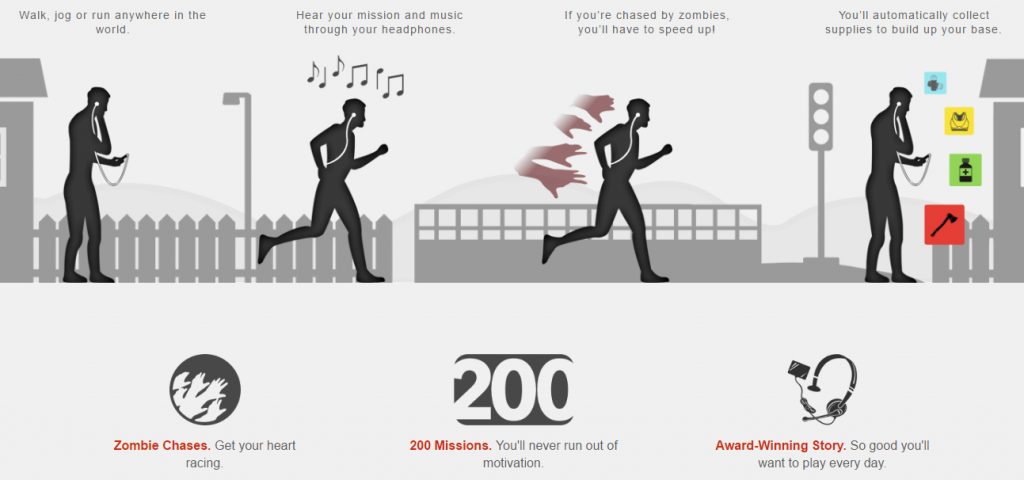
Most Augmented Reality (AR) is thought of as visual, but there are significant technical hurdles in image processing and rendering to overcome before it has widespread adoption. Audio AR is already available; if you use google maps’ walking directions through your headphones without looking at your phone then you’ve already tried it. (Many sports apps use audio cues to prompt performance too.)
For it to be audio, only the output needs to be audio, the input can be anything, GPS, accelerometers, microphones, even cameras.
"Hey Siri, who’s that guy over there? Do I know him?"
See the Ender’s Game series for an audio AR, AI character.
Consider
-
if you have an audio assistant that’s able to understand the world, what would they need to be able to do for you to make it worthwhile?
-
Historical characters like Jiminy Cricket or the angel and demon on your shoulders are prototypes for audio AR. What sorts of things could this system help you with?
-
would it all be voice prompts? How else could you sonify the interaction?
Battery density

battery statistics battery university
The ability to store energy and then release it later has been a constant human obsession. Mill ponds are there to turn water wheels when it isn’t raining and clocks run on weights and springs that release their energy slowly.
Chemical batteries make that energy portable in a way that was previously inconceivable7.
Tesla’s PowerWall batteries allow solar power to be used at night, and the same batteries that are inside the power wall are used in cars. These allow the power providers to load balance/peak shave so that they don’t need to turn on more power stations to handle peak loads.
Consider
-
Peak loads cost power suppliers a lot of money, who else stands to gain from batteries apart from consumers?
-
Will consumers prefer ever thinner phones or longer battery lives. What would life be like if you only charged a phone once a month?
-
Will the distribution of metals that make up batteries change global trade/power?
Bee population crash

Bee populations are declining.
In recent winters, in Europe alone, bee losses up to 53% became a reality.
Plants rely on insects like bees to reproduce. Plant reproduction is vital for our food supply. If the bees die, then we die too!
This dramatic decline in bee populations is the result of multiple factors such as diseases and parasites, climate change and wider industrial agricultural practices.
Consider
-
What would we need to do to support bee populations?
-
Could we come up with a technology solution to replace bees? What would the risks be?
Big data analysis

Big data analytics is the process of examining large data sets containing a variety of data types.
BIG DATA: to uncover hidden patterns, unknown correlations, market trends, customer preferences and other useful business information. The analytical findings can lead to more effective marketing, new revenue opportunities, better customer service, improved operational efficiency, competitive advantages over rival organizations and other business benefits.9
The goal of analysis is for companies to make more informed decisions. They could use Web server logs and Internet clickstream data, social media content and social network activity reports, text from customer emails and survey responses, mobile-phone call detail records and machine data captured by sensors connected to the Internet of Things.
Consider
-
How could this scale of information and its availability influence not just business but also society?
-
Are there negatives to a society driven by ‘big data’ metrics?
Cashless biometric payments
Since NFC payments—tap and go—became the norm, it has become increasingly unusual to actually make contact when you pay (i.e. insert or swipe). As this capacity has moved to phones people carry their wallets even less.
You know how iPhone’s Face ID can trigger Apple Pay’s contactless payments? Now imagine16 this technology being available in many retail settings, and in various implementations outside of the Apple ecosystem.
Consider
-
If you don’t need your wallet to pay now because it’s on your phone, then if you don’t need anything, will people leave the house without their phones? Or is there too much other value wrapped up in the phone to let it go?
-
This will need some very broad scale facial/fingerprint/iris recognition, will society value convenience over privacy again, or will this be the step too far?
Centralisation of web companies

Amazon is now bigger than Walmart Quartz
Amazon is now bigger than Walmart. The internet allows companies to centralise services. This is a long running trend; in 1850 your village would have a singer and someone who played an instrument for entertainment, but with the introduction of music recording the wealth from entertainment was concentrated into the very best entertainers. The same is happening to education and news providers.
This has also enabled the “long tail”, catering to ever more specific groups of people, but the bulk of everyone’s needs can be fulfilled by Amazon.
With increasing globalisation, more and more services will be provided by a centralised organisation, even if that organisation is coordinating others (e.g. Uber and AirBnB).
Consider
-
Companies like Amazon and Ebay provide marketplace services to smaller companies; connecting them to consumers. What are the impacts of this?
-
Do we have all our eggs in one basket?
-
Do we (consumers) stand to gain from an arms race?
-
Politicians talk about “breaking up big tech”. What effect would this have?
Compute power

The number of transistors on a microchip has doubled every 18 months or so since transistors were invented. This was first spotted by Gordon Moore, and the phenomenon is named after him: Moore’s Law20. More transistors means more calculations can be done in a given time. That means that computers can do more of what we want, feel smoother and more responsive.
Not only is each computer more powerful, but there are also more computers in the world. We all have computers in our pockets. There are giant data centres anywhere that a source of electricity or cooling can be found21. Put simply, there is a massive amount of raw computing power in the world, and the rate of its increase is increasing22.
Consider
-
Does more power unlock answers to new kinds of problem? Google search wouldn’t be possible without a certain level of computer power. What new kinds of activity will be unlocked by more power?
-
More compute power needs more electrical power. Where will this electricity come from?
-
Does everyone have equal access to this compute power?
-
Will we ever have enough computer power?
Concentration of functions into smart phones
Since smart phones emerged by merging personal digital assistants (PDAs) and telephones, they’ve been capturing more functions. Now films and documentaries regularly contain smartphone footage. You can pay with your phone, and keep your driving licence, so they’ve usurped wallets. Most online shopping is done on a phone. They are all round music players and controllers for our smart homes.
Consider
-
What else could end up on a phone?
-
Is this concentration causing a single point of failure? If your phone goes flat away from home are you totally powerless? (No pun intended)
-
Does it even make sense to call it a phone any more?
-
What other form factors could it take? What’s stopping this?
Cost of domestic property

Housing is more expensive (in real terms) than ever. As a proportion of the money that people have to spend, we are spending more of it on housing.
This might be because there isn’t enough supply of housing where people want to live. It might be because housing is a safe asset class.
Low interest rates make it easier for those with wealth to buy more houses, and house values go up much faster than most other asset classes. Are we in a bubble?
If owning stops being attractive, wealth concentration will increase, but maybe a new safe as x asset class will emerge for renters to spend their money on.
Consider
-
How did we get to the position that we’re in now?
-
What other explanations could there be for these trends that aren’t the obvious ones?
-
What would reduce the pressure on the market?
-
Is expensive housing desirable?
-
Is the current model of how we live going to survive the rise in price?
Cost of space travel

The average cost of traditional launch methods is about $25,000/kg24 but the SpaceX Falcon 9 can get that down to $2,618/kg. The Falcon Heavy is expected to be able to launch 53,000 kg to Low Earth Orbit for $90 Million or US$2,350 per kg to LEO25/26.
With fully reusable launch vehicles the cost of a launch will drop to almost the cost of the fuel. As rockets are fuelled with hydrogen and oxygen, this can be made in bulk by electrolysing water, potentially with solar power. Expect the cost to launch to continue to drop.
Consider
-
What other mechanisms might we use to get things into space?
-
What will the price drop in space travel mean for society?
-
What limits the drop in cost of space travel?
Crime/violence

Generally, crime and violence seems to be declining overall30 31. This may be because of better policing, or more surveillance. It could just be that we are generally richer, and therefore we feel less compelled to risk committing crimes to obtain what we don’t have.
Consider
-
How much crime went unreported in the past? Has this amount increased or decreased?
-
Has the Overton window moved to include new acts within the definition of violence?
-
Are we less violent because we have ‘advanced’ as a society, or because we are more afraid of getting caught?
Dark kitchens
Dark kitchens create meals exclusively for the online delivery market32. In the early pandemic many regular restaurants went dark only.
Dark kitchens have lower overheads, and can share a premises more easily, but they are at the whim of the delivery service for speed of delivery and the whim of the customer for presentation. This means that there will often be a significant overhead in packaging that can offset the savings from rent on the dining room.
Consider
-
How much of eating out is about the convenience of not having to cook? Wash up?
-
This increases demand for chefs, but decreases demand for waiting staff, what will those people do?
-
Eating out is often a safe space for first dates, if the restaurant industry collapsed (or the low-mid price range did) what would that do to dating?
Discovery of extra-terrestrial beings

You have one of the lucky-longshot cards!
There’s a lot of scope with this card.
Consider
-
What would it mean to encounter an extra-terrestrial life form?
-
Would it be sentient? Would it just be bacterial?
-
Would it be friendly, aggressive, or maybe even just unconcerned about humans and other earth life?
-
Would they give us new technology?
-
Are there other ways to be alive? Think about slime moulds, trees, bees, the earth computer from Hitchhiker’s Guide…
Drone delivery

On the surface, drone delivery is about pandering to rich people’s whims. “I want a [insert thing here] now! Minimalism has been described as a thing that only the rich can afford—everyone else needs to have backups!35 That could change if drone delivery takes off in a big way. You needn’t actually own anything because it could be delivered to you within a few minutes.
The resources needed for everyone to own a ukulele could be put into making a few really good ones with energy left over to make other things.
Drones could also be used to deliver medicine and other essentials to places that don’t have fixed infrastructure like roads or power for refrigeration. E.g. taking a shepherd’s insulin to her on the side of a hill.
Consider
-
How many of your belongings could you live without if just-in-time delivery was possible?
-
Can medical assistance be ‘delivered’?
-
What things of yours would and wouldn’t you share if a drone would pick it up and drop it off for you?
-
What other infrastructure does this make obsolete?
-
Could deliveries be made to apartment windows on high levels? How would the window need to change?
Drones

Let’s define drones as a class of robots that are able to do a human’s bidding with some level of autonomy. That might just be the ability to hover level, or it might be full autonomy over an assassination mission.
There are drones deployed in military situations, drones do the vacuuming, drones do aerial filming. The list of things that drones can do is only limited by how far we can imagine at the moment.
Most drones only have limited autonomy, but that is changing in military applications and will change in commercial and domestic ones too.
We can send drones to dangerous or inaccessible places. Wriggling into pipes to look for leaks, or flying over cliffs to count sea birds.
Drones were used to attack the Saudi Aramco oil refinery; this was consumer tech, used in a military context.
Consider
-
What if drones get so small that we can’t see them?
-
Could warfare become entirely autonomous?
-
What new types of jobs or applications might emerge for drones?
-
Will drones displace a significant part of the labour force?
Escape into fantasy worlds
Perhaps unsurprisingly, global uncertainty has led to a boom in escapism37, and all signs point to this continuing strongly into the next decade. Fantasy can and will take various forms, including long-form immersive gaming experiences, ketamine’s recreational popularity and new acceptance as a clinical treatment, and increasing commercial emphasis on the worlds of young adult literature and its spin offs across media.
There has been an increase in people shutting themselves away, in Japanese, Hikikomori38, but at the same time the traditionally reclusive activity of gaming has become increasingly social, with streaming and multiplayer worlds.
Consider
-
Virtual worlds could easily get interesting and immersive enough that people wouldn’t want to go out into the world. Is that a bad thing?
-
What would you need to inject into virtual words to keep their inhabitants function members of the outside society? Is that necessary?
-
Virtual worlds don’t need to be geographically bounded; would it ultimately break down the nation state?
-
what things need to be done in the real world?
Facial recognition

Computers can now recognise faces almost as well as humans can. They are more susceptible to tricks like face paint or sunglasses than we are, but that’s probably not going to take long to solve.
Strong facial recognition will mean that security agencies can track you wherever you appear on a CCTV feed. It means that advertisers can personalise billboards to your particular buying habits.
Consider
-
How might these ideas of surveillance influence other systems to become more intuitive?
-
Will fashion embrace it or resist facial recognition39?
-

-
What, other than faces, can be “recognised”?
-
Will the bans on facial recognition get more severe, or will they be lifted? Is there a middle ground?
Full-filter reality
Immersive, photo realistic imagery in the form of Instagram-style filter layers will become widespread beyond just phones when applied via increasingly mature augmented reality systems40, forcing people to question the relationship between the visual and the real, and potentially fragmenting consensus reality even further.
Consider
GDP

A lot of countries are getting richer. A few are getting poorer. A big slab of countries are staying the same.
Also, wealth distribution inside countries is changing.
Consider
-
What causes there to be three groups?
-
What do the countries in the three groups have in common? What do UAE, Brunei and Libya have in common?
-
What leverage are the countries that are getting richer able to use that the countries that are static don’t have access to?
-
Is GDP even a useful measure? What would the world be like if we measured something else, or a range of things?
Genetic medicine

Medicine has developed to a point where it is incredibly good at treating an imaginary, statistically normal person. Each variable that could be part of your health has a statistical range that is ‘normal’, perhaps subdivided by age, or sex, or race if you are lucky.
Genetic medicine is focused on treating each patient as an individual42. Those ranges would be hugely more specific. Based on your genetic markers you may need to keep your potassium levels between X1 and X2. This leads to much more preventative medicine being possible. This ultimately reduces the spending needed to achieve a given level of health and also makes it possible to increase general health for everyone.
All that statistical specificity unlocks a dystopian side. Health insurers can make much more accurate predictions about the true cost of insuring a person. This means that people at risk of the worst diseases will also find it the hardest to get health insurance.
Consider
-
Will this make us healthier?
-
Will we choose mates who are genetically different to us, or to try to reduce the likelihood of complications?
-
Will it lead to people being denied healthcare/insurance?
Global temperature

This graph from NASA43 shows global temperature variation
“The paleoclimate record combined with global models shows past ice ages as well as periods even warmer than today. But the paleoclimate record also reveals that the current climatic warming is occurring much more rapidly than past warming events.”
Future temperature rises differ by the model used to predict them[^34] and by the way we act in the future[^35]. These will lead to sea level rise. Partially from melting ice, but also from the water in the oceans getting bigger from thermal expansion.
Consider
-
Who will warming be bad for?
-
Who will it be good for?
-
What will temperature increases trigger? And then what will those things trigger? and what will those things trigger? And so on.
Horse population

The Horsepower was a measure of the work that one horse could do. The horse was the engine of most economies until the internal combustion engine displaced it. This was one of the first real examples of large scale disruption44.
Horses were no longer a requirement, and people quickly moved over to engines to provide motive force. Horses stayed for recreational use, but in tiny numbers compared to their previous penetration.
This is interesting, but it’s also a metaphor for a change from one entrenched technology to another. The disruption to the world can be huge.
Consider
-
Why did people prefer engines to horses?
-
What was the core function that the horse performed?
-
If you think of this as a pattern, what might replace the car?
-
What other historical technological revolutions fit the same pattern? What current technologies are vulnerable to it?
Indoor plant farming
Plants are green because they reflect the green part of the visual light spectrum; it turns out that plants need mainly pink light to photosynthesise. 1m of solar panels can generate more than 1m of pink light, so it’s very resource efficient.
The plants are grown in racks, in a sealed warehouse. Each rack has lighting and a water supply with nutrients in it. Because the building is sealed, there’s no need for pesticides because there are no pests. Because the plants are in racks, each square metre on the floor can produce tens of square metres of plants.
Consider
-
If we do this, what will happen to the farming industry?
-
What would happen to all the land that is currently used to grow plants?
-
Not all plants can be grown like this. Plants that are tall are particularly unsuited, e.g. fruit and corn. How will our diets shift to reflect the price differences?
Lab meat
Ruminants, like cows and sheep, emit a lot of greenhouse gasses. They are also sentient beings. Those are two pretty compelling reasons not to eat them. However, meat is a dense source of calories, protein and vitamins. If we can culture meat in a lab, then we can have all the upsides without any of the downsides.
Consider
-
Will we start to design meats that aren’t copies of animals?
-
Will lab meat ever overcome the yuk factor?
-
What will happen to the meat industry? What about the animals that are already alive?
-
What will we do with all the spare land that is freed up?
Psychedelia
Shrooms are the new weed, commercially speaking, as new firms and funds scramble to monetize51 psilocybin in advance of its extended clinical applications. Psychedelics as a class of drugs continue to be destigmatized, relative to other drugs. Forecasts see this reaching a new level of mainstream saturation in coming years.
Consider
Population growth rate

The world population is growing by 200,000 daily. Population increases are expected to level out globally between 2030 and 210056, but that’s an aggregate value. Some countries will still be growing fast whilst others will be shrinking (looking at you Japan).
There are a lot of factors to population growth. Better sanitation means fewer children die. Better access to education for women means that fewer children are born. People living longer means that people hang about for longer. Wars push people out of countries, prosperity pulls them in.
Consider
-
What job will all these new people do?
-
What will they eat?
-
Where will they live?
-
What factors will drive migration?
-
What limiting factors are there on Australian population growth? What could we do to remove those limitations?
Quantum computers

Quantum computers are able to solve a particular type of problem incredibly fast. Unfortunately, that particular type of problem is the one that the world’s encryption systems are based on.
Quantum computers are currently a research curiosity, if they become a real world technology then all internet transactions will fail. (Unless credit card companies and banks take action before then to upgrade to quantum encryption.)
From a more optimistic angle, once computer scientists work out how to phrase their problems in the way that quantum computers like, lots of
very hard problems become quite easy!
Consider
-
How much disruption would it cause if electronic money, and other encryption methods, stopped working?
-
If protein folding was solved, what would it mean for the pharma industry?
Radical life extension

The first children to get to 150 years old have already been born. Radical life extension advocates think that it’s possible to push that number much higher.
Technically nobody dies of old age. They die of diseases that old age makes us more susceptible to. Life extension advocates extending the useful period of one’s life to make 90 the new 40.
Immortal fictional characters often long for death, but usually because they are tired of their friends dying. If everyone lived a long time they would probably be pretty happy about it.
Consider
-
What would you do with another lifetime?
-
Which decade of your life would you like life extension to extend? Would you be in your 20s for 50 years? Teens? 40s?
-
If you could push your healthspan, at the cost of your lifespan, would you? (I.e. live in a 25 year old body until you are 60, then drop dead.)
Return of the face lift

More invasive procedures such as surgical facelifts will regain popularity – people are tired of paying over and over for fillers60, which is more like a subscription model. Superusers say a surgical facelift is cheaper in the long run, and forecasts seem to be aligned with them, as the plastic surgery sector will continue to boom overall.
Consider
-
beauty standards are variable, is doing something permanent a risk?
-
has the facelift got too much of a bad reputation from 80s stars who look bad in their old age?
-
How would this trend generalise to other things? The permanence is embraced in tattoos already?
-
how does this sit with trends towards body positivity?
Rewilding
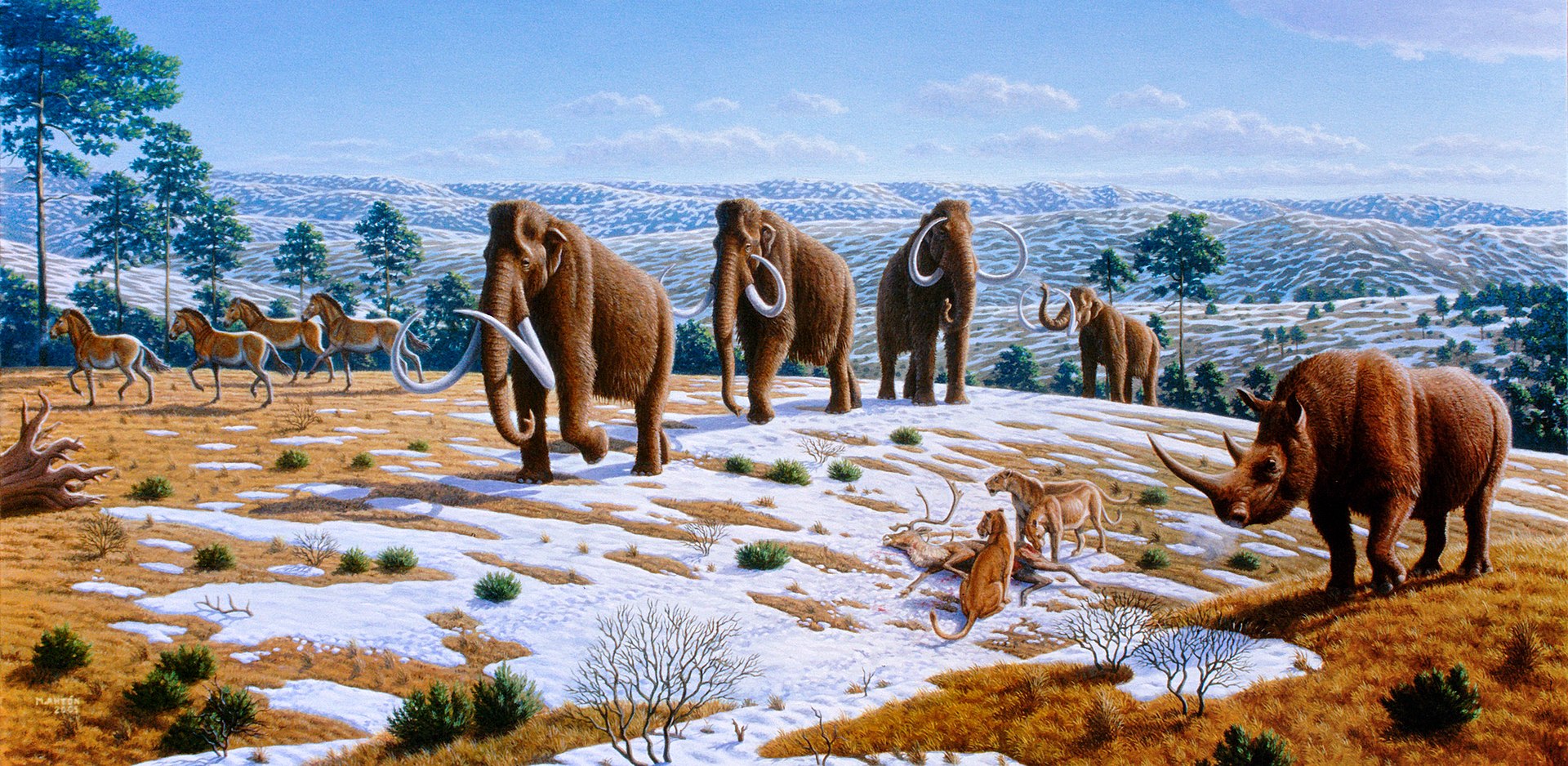
Depiction of some mammals common in northern Eurasia during the late Pleistocene, by Mauricio Antón. From left to right: wild horse, woolly mammoth, reindeer, cave lion and woolly rhinoceros. Pleistocene Park
Cities and suburbs are looking for places to downshift development and add urban greenery61 to compensate for rising CO2 emissions. Especially if carbon sequestration is eventually monetized, this could have an impact on land use overall, since owning undeveloped forest land would be profitable. This permaculture land ownership.
Progress in ancient DNA recovery is leading some to suggest rewilding with currently extinct fauna62.
Consider
-
Will this lead to a sharper distinction between urban and wild?
-
How will we interact with the apex predators (bears, wolves, etc.) that are needed for a functional ecosystem?
-
Will governments need to compulsory purchase the land from farmers, or will there be another way to incentivise rewilding? Maybe an emissions scheme, or fallow payments?
Screens

Screens have become bigger and denser. ‘Retina’ screens mean that we can get up close and not see pixels. “Don’t get too close or you’ll get square eyes” doesn’t apply anymore.
Being able to get close to a screen means that we can change the relationship with them. Touch screens mean that we can interact directly with images.
We’re seeing flexible screens making a tentative step onto the market. Soon we might see screens that feel like they have a texture (buttons, roughness, etc.). We’re also seeing screens in more places: on watches, as car dashboards, as billboards, inside VR headsets.
Consider
-
What other interface methods might supplant screens?
-
Will screens continue to get bigger and denser?
-
What will happen if screens stop being personal and are about shared experiences?
-
where else could we have screens?
Self driving cars

From a long shot dream in 200463 driverless cars are now more of a when than an if.
Humans need a lot of tolerance to account for their imperfect driving skills. That means that the lanes need to be wider, cars need more impact protection, cars need to drive further apart.
Cars also represent freedom for a lot of people. Owning a car means that for a large proportion of the day each car is idle. When cars drive themselves it’s unlikely that anyone will own a car. Cars will provide mobility. That means that parking will be eliminated, freeing up almost half of the current road network and many structures currently dedicated to parking.
While not driving, people will be free to do other things. They could sleep, have meetings, eat, relax, etc.
“To generations of Americans, owning a car represented freedom. To the next generation, not owning a car will represent freedom.”64
Consider
-
Will this replace mass transit?
-
Current cars are styled to face forwards, and to be a little bit like racing cars. What will future cars be like?
-
What will this do to ownership models? Will it be transport as a service?
-
What effect will this have on moral standards (drink driving) or sexual freedom?
Smart homes & internet of things

Legislation is already in place that all white goods will have wireless communication built in. That means that a central controller in your house will be able to tell your air conditioning to ease off a couple of degrees to reduce peak electricity loading.
The dream of smart refrigerators ordering more milk as you run out is getting closer. There are lots of other issues that are less obvious and less friendly about every aspect of your life being instrumented. E.g. there have been lots of examples of smart home devices being hacked and used as spy cameras. Less frightening, but still annoying, a lot of smart devices stop working altogether if the parent company shuts down.
Consider
-
Would you let a power company decide when you boil the kettle if it saved you money?
-
Who would have access to data about your house? Who should?
-
Would you like to be able to turn off your iron if you left it on at home? How about your lights?
-
What if your smart lock company goes broke and you can’t get into your house?
-
How does this impact the built environment?
TikTok/K-pop activism

Apps and subcultures that consist of almost entirely young people are able to self-organise and do things that seem surprising and impossible to the older population that aren’t involved. E.g. the overbooking of a Trump rally by K-pop fans.
The capacity for a group of under-enfranchised people to self-organise like this is new, and its power is not well understood.
Consider
-
This is inherently global, the arab spring was similar, but had local effects, where could this go next?
-
Is this just gen Z using TikTok? Might we see a coup led by the Peppa Pig fan chat brigade?
Ubiquitous broadband

Broadband internet unlocks so much of our urban economy in the developed world but that is a small part of the earth’s surface.
What would access to broadband do for rural African farmers, or for Antarctic explorers?
Google had project Loon, Facebook tried giant autonomous planes that act as repeater stations to the ground. SpaceX is putting a network of toaster-sized internet-satellites into orbit and .
If everyone in the world has access to the same markets it would have a huge levelling effect. It might raise the incomes of the poorest, but it might well lower the incomes of the most well-off.
Consider
-
What can you do with fast internet that you can’t with slow internet?
-
Could the world’s best robotic surgeons operate on the cases that most needed their help, regardless of how close they were to a big hospital?
-
Could low income Indian children get educated by the best teachers?
-
Could Ethiopian graphic designers sell their expertise to Chilean wine producers?
-
What are the exponential potentials with this card?
-
If broadband is ubiquitous (e.g. available in national parks), will it be possible to get away from it? Is this a good thing? Is it a technology problem or a social problem?
Urbanisation

Populations and urbanisation percentages by Hannah Ritchie and Max Roser, Our World in Data
The NSW Department of Infrastructure Planning and Natural Resources estimates that 60% of the world’s population will be living within cities by the year 2030 and about 91.1% of the Australian population will live in cities. They expected the population in the Sydney Region alone to grow by a net increase of 40,500 per year.
The forecast demand for new residential development to support Sydney’s current population is 25,000 dwellings per year over the next ten years, with 25% of that growth located in Greenfield sites on the urban periphery and Greater Metropolitan Region corridors.
With the enlarging population and increasing urbanisation the demands on resources will contribute to further degradation of the Australian environment and Sydney’s ever expanding urban sprawl.
Consider
-
Is it inevitable that the urbanisation trend will continue?
-
Can we bring traditionally rural activities into cities too?
-
What benefits could come from even greater urban density?
-
What mistakes are cities making right now that we might not make in the future?
Virtual reality

Current virtual reality gives us a glimpse of how we’ll experience it in the future. There’s a lot between us and fully believable, totally immersive virtual environments. As we solve more and more of those problems, VR will become more useful. Breaking out of gaming to be the standard method for video conferences, for virtual site tours and for shopping.
Consider
Walking robots

Legs have lots of advantages over wheels. 2, 4 and more, legged robots are able to go places that wheeled and tracked vehicles can’t71. That means that we can send robots to map remote places, or to navigate places designed for humans. (Or other legged things!)
Most of the current crop of robots have military origins, but they are also ideal of other types of hostile environments, like firefighting, rescue or space!
Consider
-
What other sectors could these robots be used in?
-
Wheels need smooth surfaces, legs don’t. Will we need fewer roads?
-
Does this have an outsized effect on humans’ exceptional talent of mobility in difficult spaces? Will it affect employment?
Wearable/implantable technology
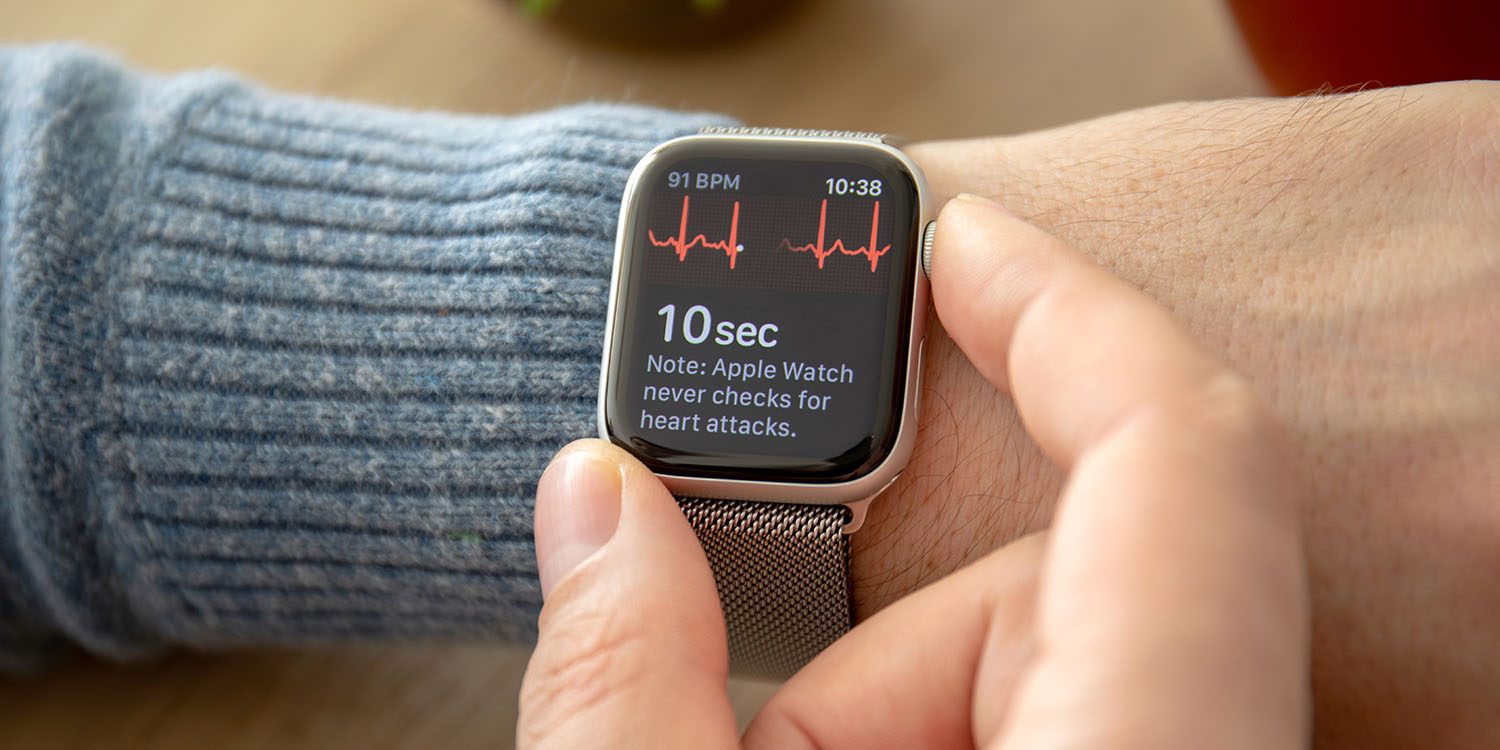
Apple watches have FDA approved ECG capabilities, but its usefulness is disputed 9 to 5 mac
We are in the first flush of the wearable technology boom72. The quantified self73 that knowing your steps and heart rate allows for means that people can make more informed choices about their behaviour.
We are currently in a very naïve period of this trend. The things we measure aren’t the important things, they are the things that are easy to measure. The feedback we get is distracting and doesn’t allow us to be more present in our lives. In the next generation of wearable, or even implantable, technology, we’ll be able to use it to maximise our health and wellbeing, and to be far more present than we currently are.
In vet science, there are sensors that sit in a cow’s stomach that can relay back to the farmer the health of each cow. Humans have pacemakers, but non-therapeutic implantables are almost unheard of74.
Consider
-
What else could you measure and what would be the best way to do it?
-
What would you do with that data?
-
Who else would like to know that information about you? What information would you worry about if it was leaked?
XYZ as a service

Anything you can do or own yourself can probably be provided as a service78 to you. Gmail is the most obvious example: email as a service. People tend not to have a well at their house, they get water as a service.
You can get computing and storage as a service from AWS. X as a service also applies in the physical world. Uber and GoGet are examples of transport as a service.
Consider
-
What advantages are there for rolling your own? (This mean not using x as a service, but making a version of that service for yourself.)
-
What can’t be turned into a service and why?
-
What will people do when they have a service for everything?
-
What do you own/do that could be provided as a service?
Zoom fashion
Fashion designers and retailers will create markedly different strategies79 for fashion that appears on the upper body, ie above “the Zoom line” compared with the bottom half of the body, which isn’ usually visible on screen.
Many fashion houses have been embracing comfort and loungewear. Tracksuit bottoms have become the defacto cool weather bottoms of the pandemic.
Consider
- Now that we’ve had a taste of comfort, will we go back?
life expectancy

Life expectancy continues to increase80 in contrast to Hobbes’ idea of life, which was “Nasty brutish and short”. We are comfortably on track to hit an average life expectancy of 100. There is a lot of variation in global life expectancy. That average of 100 means that there will be a global reduction in lifespan inequality, or that some nations will see huge lifespan increases. It’s not uncommon to see claims that some children alive today will live to be 15081 or 20082!
Life expectancy is measured at different ages. These days, in ‘developed’ countries the difference between life expectancy at birth and at five years isn’t substantially different. Some believe that prehistoric humans could expect to live into their mid fifties83 if they made it through childhood.
Consider
-
Will life expectancy rise equally all over the world?
-
Will people work for longer in their life?
-
Will people maintain a single career? Does their degree from 1990 have any validity in 2050?
-
Will there be a modern equivalent to coopers and farriers needing to find new careers during their lifetimes?
Design for Manufacture and Assembly (DfMA)
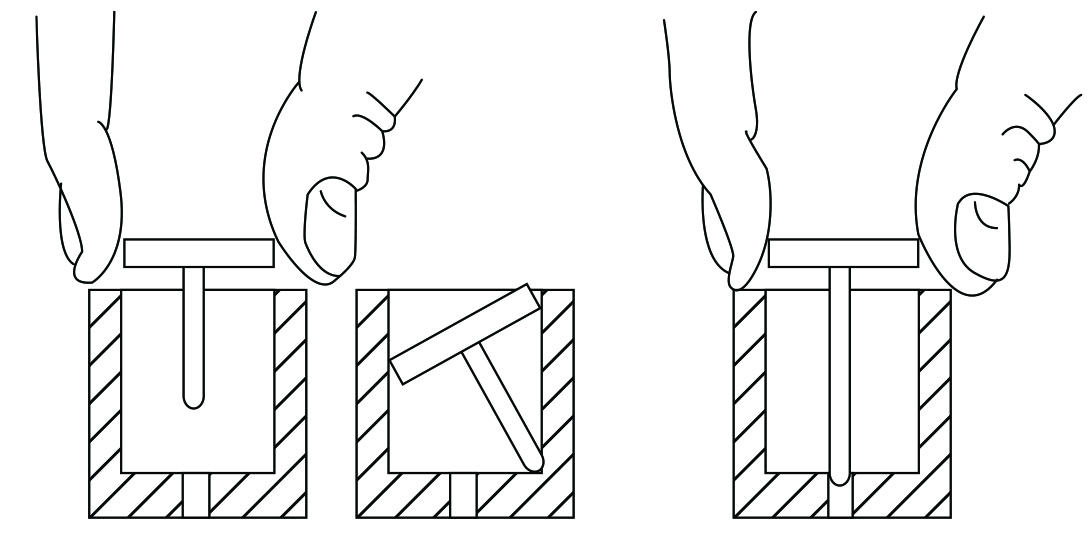
An example of DfMA design refinement to improve assembly ease. Boothroyd, Geoffrey, Peter Dewhurst, and Winston A. Knight. Product Design for Manufacture and Assembly. 3rd ed. Manufacturing Engineering and Materials Processing 74. Boca Raton, FL: CRC Press, 2011. p.83.
Design for Manufacture and Assembly (DfMA) is a product design approach that was developed in the manufacturing industries as a way of linking the design and production processes of product development. DfMA captures production data and makes it accessible to the design team in the form of design principles and guides, and metrics for design evaluation and improvement. The aim is to create designs that are efficient, fast, and cost effective to produce. DfMA advocates: modularity and standardisation of parts and processes; simplicity in design; connection interfaces that cannot be assembled incorrectly; part count reduction (as fewer parts as possible); and an emphasis on maintaining good visual and physical access to all connection points (think IKEA!).
In the last decade, the construction industry has turned its attention to DfMA as a potential solution to its productivity crisis. Although some of the DfMA design rules (and most of the DfMA metrics) used in manufacturing are not completely appropriate for use in the design of buildings, DfMA as a philosophy certainly is, especially when paired with prefabrication. The development of a construction-specific DfMA represents a shift towards data-informed design. The construction industry will need to increase the sophistication of its data collection methods during building production/construction phases so that an appropriate set of design guides and evaluation metrics can be developed.
Consider
-
What kind of production data (in factories, in transit, on site) will be important to capture to inform design, and how might we do this?
-
How much standardisation (product and/or process) is it possible to achieve in the construction industry?
-
What does part count reduction mean at the scale of a building?
-
If buildings can be assembled as easily as IKEA furniture, what does that mean for the construction workforce?
-
If buildings can be assembled easily, they might also lend themselves to easy disassembly. How might this change the way we source new materials/components and design new buildings in the future?
Mass Timber Construction
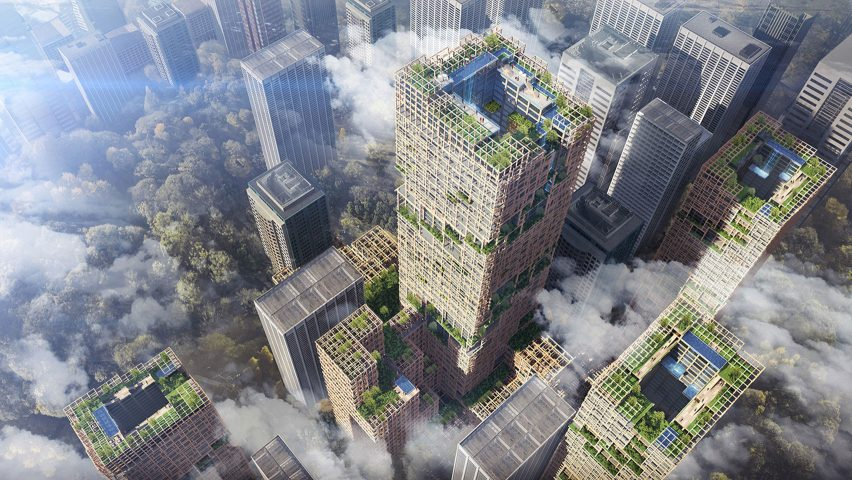
A 350m tall timber tower proposed for Tokyo. Sumitomo Forestry
Mass timber construction refers to the use of engineered timber products such as cross-laminated timber (CLT) and glue-laminated timber (glulam) in the structure of a building. Engineered timber products are made by gluing layers of raw timber boards together into planar elements (CLT, used in floors and walls) or linear elements (glulam, used in columns and beams). This production method means that large timber building parts can be produced without cutting down old growth forest. Additionally, the properties of the building elements can be enhanced by using different types of timber (and even other materials) in the composition of layers.
Mass timber construction offers many benefits over typical concrete construction. First, timber sequesters carbon, meaning that the building becomes a carbon sink for the duration of its lifetime (as opposed to emitting carbon, as concrete manufacture does). Second, mass timber is much lighter than concrete, so it needs smaller foundations, and can often be used to add new floors to existing buildings. Third, mass timber changes the nature of the construction site, eliminating the need for formwork and wet trades, and significantly increasing the speed of construction (Brock Commons, an 18-storey mass timber project in Canada achieved a floor cycle time of 3 days). Some issues to consider when building with mass timber, include: forest certification, carbon miles in delivery (if CLT or glulam is not being manufactured locally), performance of the building under fire conditions, chainsaw attack!
In 2009 the first “tall” mass timber building—the 9-storey Stadthaus Murray Grove in London—triggered a global fascination with pushing mass timber to its limits. Since then, several buildings have held the record for tallest, only to inevitably have the title taken away. The current tallest, Mjøstårnet in Norway, sits at 85m, however a Japanese company has proposed a 350m tall structure for Tokyo, and is currently conducting research towards making this happen in the very near future.
Consider
-
Often with technological change, initial roll-outs tend to mimic what has come before: the first cars looked like horse-less carriages, early steel skyscrapers were adorned with the fluting and ornaments of earlier 19th century buildings. Mass timber construction is a relatively new building typology, and as such, expectations are not yet set. Many current mass timber building designs adopt the language of contemporary reinforced concrete and steel construction, however an emphasis on sustainability is emerging. What innovative architectural typology might mass timber evolve into in the future?
-
If mass timber becomes the predominant construction technique in our cities, how will we sustainably manage the demand for raw timber?
-
Engineered timber products have not been around that long (glulam around 100 years, CLT around 35 years). We do not know how the products will degrade in 200, 300, 600 years’ time. What kinds of monitoring/intervention mechanisms should be introduced to ensure the safety of inhabitants living in cities full of 350m tall timber skyscrapers?
Private space exploration and asteroid mining

Asteroids are mainly made of nickel iron or frozen water. They also contain a lot of platinum group metals. They are easy to mine because they don’t have big gravity wells that need to be overcome.
Water is important to space travel because humans need to drink it, but unmanned missions need water too because it can be split into rocket fuel. Launching things into space is really expensive, so if it’s possible to build spacecraft from things already in space it’s much cheaper.
The availability of precious metals in asteroids could upset the world economy in the same way that the influx of silver from South America caused massive inflation in the 15th–17th century84.
Consider
-
If you hollow out an asteroid what could you do with it?
-
Platinum is used as a catalyst in chemical reactions. Making it a lot cheaper would make a lot of these applications more viable. What sorts of things could we do if the cost of platinum went down?
-
What could you do with a million tonnes of water in space?
-
Getting raw materials into space is expensive. What could you use the iron in an asteroid for?
Smart homes & internet of things

This is an image of an xxx by YYY
Legislation is already in place that all white goods will have wireless communication built in. That means that a central controller in your house will be able to tell your air conditioning to ease off a couple of degrees to reduce peak electricity loading.
The dream of smart refrigerators ordering more milk as you run out is getting closer. There are lots of other issues that are less obvious and less friendly about every aspect of your life being instrumented. E.g. there have been lots of examples of smart home devices being hacked and used as spy cameras. Less frightening, but still annoying, a lot of smart devices stop working altogether if the parent company shuts down.
Consider
-
Would you let a power company decide when you boil the kettle if it saved you money?
-
Who would have access to data about your house? Who should?
-
Would you like to be able to turn off your iron if you left it on at home? How about your lights?
-
What if your smart lock company goes broke and you can’t get into your house?
-
How does this impact the built environment?
-
Not the song, but Wireless Application Protocol ↩
-
Machine Bias - There’s software used across the country to predict future criminals. And it’s biased against blacks. by Julia Angwin, Jeff Larson, Surya Mattu and Lauren Kirchner, ProPublica May 23, 2016 ↩
-
Blendle is a Dutch online news platform that aggregates articles from a variety of newspapers and magazines and sells them on a pay-per-article basis. The key differences to similar websites are the participation by otherwise commercially unrelated news services in a single platform and the ability for registered users to easily pay a small price per article. ↩
-
https://www.home.saxo/insights/news-and-research/thought-leadership/outrageous-predictions ↩
-
“Autofac” is a 1955 science fiction short story by American writer Philip K. Dick that features one of the earliest treatments of self-replicating machines ↩
-
Watch springs are the obvious precedent, but their energy density is tiny in comparison. ↩
-
https://www.mintel.com/global-consumer-trends ↩
-
As far as I can tell this counts the number of connections, but doesn’t take into account how many people share that connection. The number is 40 for France, but there might be more than 2 people sharing each line. Which would mean more than 1 connection per person! Data via Google: World Development Indicators ↩
-
Illustrated by how many totalitarian nations restrict access to the whole internet. ↩
-
https://info.trendwatching.com/21-trends-for-2021 ↩
-
https://www.mckinsey.com/industries/retail/our-insights/state-of-fashion ↩
-
https://info.trendwatching.com/21-trends-for-2021 ↩
-
https://www.mckinsey.com/~/media/mckinsey/featured%20insights/china/china%20still%20the%20worlds%20growth%20engine%20after%20covid%2019/mckinsey%20china%20consumer%20report%202021.pdf ↩
-
https://intelligence.wundermanthompson.com/trend-reports/the-future-100-2021/ ↩
-
https://www.accenture.com/us-en/insights/interactive/fjord-trends ↩
-
Which is why there are so many data centres in Iceland. ↩
-
Note that the graph has a log scale, that means that each line is an increase of 10 times, not of one unit! ↩
-
All these graphs are from: The history of Australian property values ↩
-
Advanced Space Transportation Program: Paving the Highway to Space ↩
-
http://violentdeathproject.com/countries/australia ↩
-
From Wikipedia: Crime in the United States ↩
-
for a nice interactive view of this phenomenon this article is good ↩
-
Dark kitchens create meals exclusively for the online delivery market - ABC ↩
-
https://victrola.com/blogs/articles/music-industry-trends-to-look-for-in-2021 ↩
-
https://info.trendwatching.com/21-trends-for-2021 ↩
-
Minimalism: another boring product wealthy people can buy "Minimalism is just another form of conspicuous consumption, a way of saying to the world: “Look at me! Look at all of the things I have refused to buy!" ↩
-
https://www.fastcompany.com/90588717/top-tech-trends-2021-post-pandemic-predictions-ai-fintech-health ↩
-
https://www.foresightfactory.co/trends-report/ ↩
-
https://en.wikipedia.org/wiki/Hikikomori ↩
-
Accessorize to a Crime “Research from Carnegie Mellon University can generate visual patterns onto glasses to either avoid facial recognition or ‘impersonate’ as someone else” ↩
-
https://www.frogdesign.com/designmind/trends-2021?utm_campaign=USA_Trends%202021&utm_source=email&utm_medium=trends%202021%20email&utm_term=trends%202021%20email&utm_content=trends%202021%20email ↩
-
GDP per capita (constant 2000 US$) ↩
-
I’m mainly talking about personalised medicine here:. Medicine that affects genes is another topic, big enough to justify its own card. ↩
-
With the printing press displacing scribes as the other that I can think of. ↩
-
https://bit.ly/3Hxlzl3 ↩
-
internet.org was planning to make internet access available through solar powered planes. ↩
-
Loon was planning to make internet access available through weather balloons. ↩
-
Drug harms in the UK: a multicriteria decision analysis by Prof David J Nutt, FMedSci; Leslie A King, PhD; Lawrence D Phillips, PhD ↩
-
https://www.singlegrain.com/web-trends/what-is-live-stream-shopping/ ↩
-
https://www.foresightfactory.co/trends-report ↩
-
https://www.benzinga.com/markets/cannabis/21/01/19329903/7-psychedelic-trend-predictions-for-2021 ↩
-
Worth checking this out! Frog: Mobile Money in Afghanistan ↩
-
There is an article about the economy of second life and this is an exchange that only deals in virtual currencies. Both are shut down now, but there were some wild stories from that era! ↩
-
Something like 80% of €500 notes are believed to be used in money laundering! The End of Money: Counterfeiters, Preachers, Techies, Dreamers–and the Coming Cashless Society ↩
-
ABS data, high scenario. ↩
-
Wikipedia: World population ↩
-
This talk is a really good source to understand the threats to the open internet ↩
-
TODO: find what this footnote pointed to ↩
-
https://en.wikipedia.org/wiki/Price_revolution ↩
-
https://www.newbeauty.com/aesthetic-trends-2021 ↩
-
https://www.mintel.com/global-consumer-trends ↩
-
https://www.theatlantic.com/magazine/archive/2017/04/pleistocene-park/517779/ ↩
-
https://en.wikipedia.org/wiki/DARPA_Grand_Challenge ↩
-
http://breakingsmart.com/a-new-soft-technology ↩
-
http://idisrupted.com/disrupted-electronics-internet-things-may-create-moores-law-steroids/” ↩
-
https://www.fastcompany.com/90588717/top-tech-trends-2021-post-pandemic-predictions-ai-fintech-health ↩
-
a16z Podcast: Companies, Networks, Crowds ↩
-
https://www.mintel.com/global-consumer-trends ↩
-
Or can’t without causing substantial damage. ↩
-
Fifth, if you count clothes, shoes, spectacles and wrist watches as the first four.” ↩
-
The Quantified Self movement was founded by Kevin Kelly, and whilst niche at the time is now so mainstream that it’s basically not talked about any more. ↩
-
See the case of Meow-Ludo who implanted an transport card into his hand ↩
-
from How Did Work-Life Balance in the U.S. Get So Awful?. If we assume a 50 week year, Greece has gone from 54 hour weeks to 41; the Netherlands from 46 to 28! ↩
-
https://www.abs.gov.au/articles/insights-hours-worked ↩
-
When John Maynard Keynes Predicted a 15-Hour Workweek “in a Hundred Year’s Time” (1930) ↩
-
The World Of Everything-As-A-Service, Tom Blomfield, Techcrunch ↩
-
https://www.wgsn.com/content/board_viewer/#/85986/en/page/1 ↩
-
https://goo.gl/0omR22 ↩
-
http://goo.gl/CCBPuv ↩
-
http://ktwop.com/2012/12/27/the-first-200-year-old-human-has-already-been-born/ ↩
-
Hillard Kaplan, Kim Hill, Jane Lancaster, and A. Magdalena Hurtado (2000). A Theory of Human Life History Evolution: Diet, Intelligence and Longevity (PDF). Evolutionary Anthropology 9 (4): 156–185. ↩
